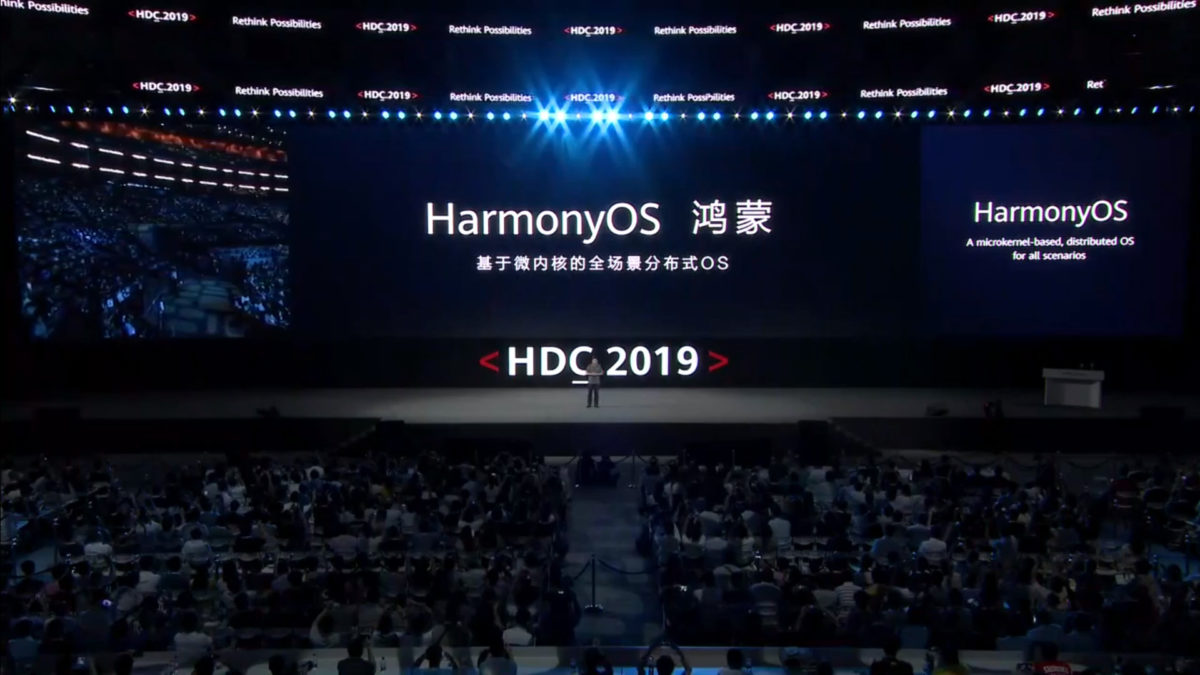At the Huawei Developer Conference 2019, held at Dongguan Basketball Centre – a stunning venue in the Chinese Province of Dongguan – Huawei Consumer CEO Richard Yu has unveiled HarmonyOS. HarmonyOS – which we all knew as HongMeng until recently – is Huawei’s answer to losing access to Android, giving the company hope in the event that it loses access to key American partners including Google.
The emphasis at this event has been made very, very clear – even though the presentation is in Mandarin Chinese, which I do not speak, it was very clear that Mr Yu was clearly hitching Huawei’s wagon to Android. It was made very clear that Huawei would continue to use Android for its smartphone and associated platforms if at all possible. This much isn’t really news – Huawei executives have been saying this for many weeks now.
However, what HarmonyOS promises is, according to Mr Yu, a lifeline for the consumer business group and its reliance on Android for much of its smartphone, tablet and accessory products. Mr Yu said that, while HarmonyOS is not on smartphones now, and is not ready for smartphones now, should Huawei lose access to Android, changes could be made to re-tool production development to use HarmonyOS instead of Android within a matter of days, not weeks or months.
Thus, while upcoming smartphones are being developed for Android for now, you can imagine that this is something akin to Apple’s big unveil when it was working on the transition from Power PC to Intel chipsets. In a wow moment, then Apple CEO Steve Jobs revealed that Apple had been developing MacOS in parallel on Intel hardware for some time, making the switch all but seamless. One can only imagine that Huawei has been doing the same with recent and upcoming smartphones, developing primarily for Android, but also testing its variant of HarmonyOS for smartphones just in case.
Thus far, nothing has been demonstrated, and we know little of HarmonyOS beyond its architecture. It is a micro-kernel based operating system, and – we’re told – it can emulate the Android application layer seamlessly and smoothly, so should a transition from Android to HarmonyOS be required, it’s ready to go as soon as possible.
What does this mean for consumers? Well, today, it doesn’t mean an awful lot. For now, HarmonyOS is only in use in a few real-world uses, including an upcoming TV device which CEO Richard Yu indicated would be shown off later during the Huawei Developer Conference. The same technology has also been used in a couple of discrete places, including the Trusted Execution Environment module in recent smartphones. However, as a non-user facing function, it would not be apparent that HarmonyOS was used at all.
From HDC 2019, the message is clear. Huawei wants to use Android if it can, but if it can’t, HarmonyOS is the answer. HarmonyOS may also be the future, hopes Yu, who claims that the development of the new Open Source OS could hail the next major development in the evolution of smart device operating systems.
A bold claim, and during the rest of the conference we’ll get the opportunity to know more about whether this is just marketing bunkum, or whether HarmonyOS is the viable alternative it is held out to be.




